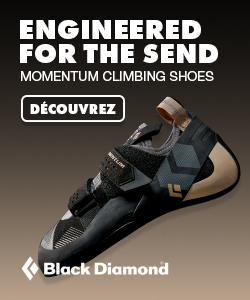Why Finger Pulp, Not Tendon Strength, Makes for Better Crimping

When we think of our ability to bear down on small holds, we usually think of tendon strength. But the study “Measuring Lifting Forces in Rock Climbing: Effect of Hold Size and Fingertip Structure” (Roger Bourne, et al.; Journal of Applied Biomechanics, 2011) suggests that high-level climbers’ ability to crimp micro-edges may, surprisingly, be mostly about the amount of soft tissue (“finger pulp”) in their fingertips and the friction created when their tips deform (“squish”) to accommodate the shape of the edge.
Finger : Beefier Is Better
The study found that meatier tips are an advantage for crimping. This is because the smallest holds only accommodate your very fingertips, where there are no bones and where friction—not tendon strength—reigns supreme, courtesy of that easily deforming soft tissue.
Measuring Tip Squish
Using ultrasound, researchers found that individuals with the greatest “bone to tip pulp dimensions” (i.e., the most soft tissue between the tips of their finger bones and their fingertip skin) displayed the greatest force production on the shallowest edge (2.8mm). To measure force production, participants performed single-hand dead-hangs on crimps while standing on a scale. The weight displaced was then calculated relative to their bodyweight to reach body mass-normalized lifting force (i.e., strength-to-weight ratio).
Climb Like a Girl
The finding that friction is the most influential factor in crimp strength led researchers to speculate that it’s generally women’s softer, thinner skin (on average 25 percent thinner than men’s) that lends them their edge at crimping. The same logic may also explain young crushers’ notable crimping ability. Children have significantly thinner skin than adult men or women. With an infant’s overall skin thickness around one-fifth that of an adult’s. Skin continually thickens until about age 50. Also meaning that younger climbers could have a slight advantage on tiny edges.
Uniquely Symmetrical
There was no significant strength difference between climbers’ dominant and nondominant hands, likely the result of years of climbing, through which favoritism is eliminated.








